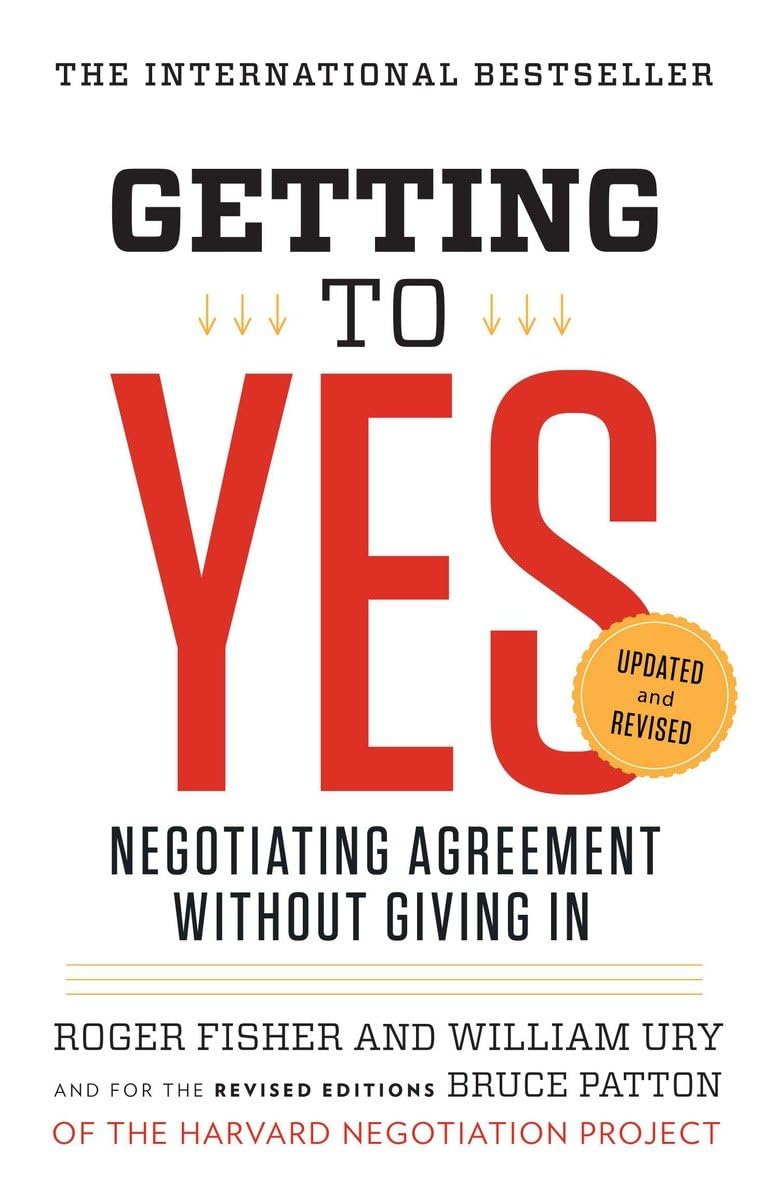The Art of Principled Negotiation: How to Reach Agreements and Preserve Relationships
Introduction
Negotiation is not just a way to get what you want — it’s a vital tool for strengthening both professional and personal relationships. However, negotiations often turn into battles: one side is soft, friendly, and accommodating, while the other is tough, assertive, and demanding. In such cases, the tougher player usually wins. The result? An unbalanced agreement and damaged relationships.
The alternative to these extremes is principled negotiation — an approach that allows you to be firm on the substance but soft on the people. It helps you reach a fair outcome without destroying the relationship. This method is based on four key principles.
Keywords: negotiations, effective negotiation, win-win, mutual interests, objective criteria, negotiation example, compromise method
The Four Principles of Principled Negotiation
- Separate the people from the problem
- Focus on interests, not positions
- Invent options for mutual gain
- Insist on using objective criteria
🧭 Step 1. Be Gentle on People and Hard on Problems: Separate the People from the Problem
- A too-soft approach leads to concessions and weakness.
- A too-hard approach destroys dialogue.
Navigating the human element is often the most challenging part of any negotiation. We often see the other party as the problem itself, not as a partner in solving it. We react emotionally — we feel hurt, defend ourselves, attack — and we lose sight of the issue.
What helps?
- Shift your focus. Don’t look at the person — look at the task. Stop fighting each other and start fighting the problem together.
- Put yourself in their shoes. The root of conflict often lies not in facts, but in perception. Try to understand the other person’s logic, motives, and emotions. That doesn’t mean you agree — it means you acknowledge.
- Don’t assume bad intentions. Fear can distort perception. We often think we’re being deceived or undermined, even when we’re not. Try to understand the other party’s behavior without jumping to blame.
- Don’t merge the person with the problem. Criticize the situation, not the person. If you’re being criticized — don’t get defensive or go on the offensive. Bring the conversation back to the substance. Like in judo, redirect the opponent’s energy toward analysis and problem-solving.
- Let emotions flow. Allow your counterpart to vent. Listen fully. Don’t interrupt or argue. This reduces tension and opens the door to dialogue.
- Listen actively. The simplest concession is attention. Show that you hear and understand. Ask questions, clarify, repeat key points. That’s not agreement — it’s respect.
- Speak with care. Instead of “You broke the agreement,” say, “I felt vulnerable.” Instead of “You’re lying,” say, “I find it hard to agree because…” Speak from your own experience, without blaming.
- Help them save face. Often, people won’t back down simply because they don’t want to lose respect. Help them accept your proposal with dignity — reframe the terms so they appear fair and reasonable to both sides.
What to do:
- Avoid categorical statements.
- Offer compliments and acknowledge the other person’s contribution.
- Ask yourself during the conversation:
“Am I giving this person enough attention?”
People perceive everything through their own lens. Being direct minimizes misunderstanding. When you feel heard, you’re more likely to be heard in return. A friendly atmosphere five minutes before and after the negotiation significantly increases success — research shows up to a 30% improvement in outcomes.

🔍 Step 2. Interests First, Then Opinions: Focus on Interests, Not Positions
Disputes often revolve around positions rather than true interests.
Example: In a library, one person wants fresh air, the other wants quiet.
Solution: Open a window in the adjacent room.
Positions are what people declare.
Interests are why they declare them.
For instance, a position might be: “I want a discount.”
The underlying interest: “I need to stay within budget.”
The other party might say: “We don’t give discounts,” but if the interest is understood, a different solution may emerge: payment in installments, a different package, or added services.
How to identify interests:
- Put yourself in your counterpart’s shoes. Ask yourself: Why do they hold this position? What’s behind it?
- Don’t assume everyone on the other side shares the same goals. Each person may be guided by different priorities — leadership, client satisfaction, or personal values.
How to express your own interests:
- Be specific. Avoid generalities. Clearly state what’s important to you and why.
- Talk about the future. The past is often emotional and contentious; the future is a shared goal.
- Present interests before proposals. Justify your ideas, explain your reasoning — then move on to terms.
- Show you understand the other side’s interests. They’ll be more open to hearing yours.
What to do:
- Ask yourself:
- What is my counterpart interested in?
- What are their real needs?
- Express your own interests:
- To be heard
- To find a solution — without conflict
This shifts the focus from personal emotions to collective outcomes.
👉Stop worrying about money! Take the free Money Mastery: 7-Day Challenge mini-course – and start your path to success today!
📊 Step 3. Objective Standards: Invent Options for Mutual Gain
When positions conflict (rent price, service fees, etc.), use objective criteria:
- Legal standards
- Market rates
- Expert assessments
Example:
If a contractor believes a foundation is solid at 0.5 meters, but the standard requires 1 meter — refer to the regulations and discuss facts.
Negotiations often stall because both sides are trying to choose a single “correct” solution. But the key is to create a space for choice.
What helps:
- Separate phases. First, generate ideas. Then, evaluate them. Don’t kill creativity with early criticism.
- Brainstorming. Start solo — to protect sensitive ideas. Then collaborate — for shared exploration.
- Always offer multiple options. It gives a sense of freedom and increases the chances of agreement.
- Use the circle method:
Problem → Possible Approaches → Actions
This framework helps generate new ideas based on existing ones. - Bring in different perspectives. A lawyer, marketer, HR rep, or client might unexpectedly enrich the discussion and lead to creative solutions.
- Agree on the process if you can’t agree on the content. Sometimes, the path to resolution lies in discussing how you’ll decide, not what to decide.
Amazon link:
📘 Getting to Yes: Negotiating Agreement Without Giving In — the classic guide by Fisher, Ury, and Patton.
💡 Step 4. Mutually Beneficial Solutions: Insist on Objective Criteria
Instead of arguing over whose opinion matters more, use independent standards. These could include:
- Market prices
- Expert opinions
- Legal norms
- Statistics
- Common principles of fairness
How it works:
- Discuss the criteria together. Choose those both sides respect.
- Don’t argue over “wants” — discuss the rules of the game. This makes negotiations fair and transparent.
How to do it:
- Organize a brainstorming session:
- Don’t judge ideas immediately.
- Let thoughts flow freely.
- Evaluate options:
- Assess their feasibility.
- Build a plan together.
Disagreements aren’t the enemy — they’re a trigger for creativity and new solutions.
🛡️ What to Do When the Other Side Plays Dirty or Has Power Over You
- Expose manipulation tactics:
Call out deception directly: “Let’s not point fingers — let’s talk about our goal.” - When the other party holds more power:
Develop your BATNA — Best Alternative To a Negotiated Agreement (read more).
Define your minimum acceptable terms and remind yourself you always have a choice. - Respond with understanding, not aggression:
- Ask “why?”
- Ask “What would you do in my place?”
- Encourage criticism — to uncover their motives and interests.
If you want to master this in real life, start with the first step:
Next time you’re in a negotiation, ask yourself:
“What’s the real issue between us — and how can we solve it together?”
📘 Recommended Resources
Books:
• Getting to Yes — Fisher, Ury & Patton
• Never Split the Difference — Chris Voss (former FBI negotiator)
• Getting More — Stuart Diamond
Articles & Research:
• Interest-Based Negotiation (Harvard PON): Win-win through understanding interests
• Integrative Bargaining: Growing the pie, not just dividing it
Links:
• Getting to Yes on Amazon
• Never Split the Difference — Amazon Summary
• Stanford PON – Harvard article on interest-based negotiation
Learn how to control your emotions – Go ahead and read!
🔚 Conclusion
Principled negotiation is a strategy that allows you to be both firm and flexible.
You don’t give in — but you don’t fight either.
You don’t manipulate — but you don’t cave.
You build bridges, not walls, and reach what truly matters: mutually beneficial, fair, and sustainable outcomes.
Negotiation is not a battle for victory.
It’s a shared search for a win-win.
The art of negotiation isn’t about dominance or control. It’s about:
- Softness in communication
- Awareness of interests
- Reliance on objectivity
- Shared benefits
By letting go of the illusion of control and applying these four steps, you will:
• Strengthen relationships
• Achieve better outcomes
• And preserve your dignity
“Be wise, not right. That’s the real secret of negotiation.”
💡 Follow the LevelUpWithin blog — for more tools on mindset, emotional intelligence, and strategic thinking for everyday life.



